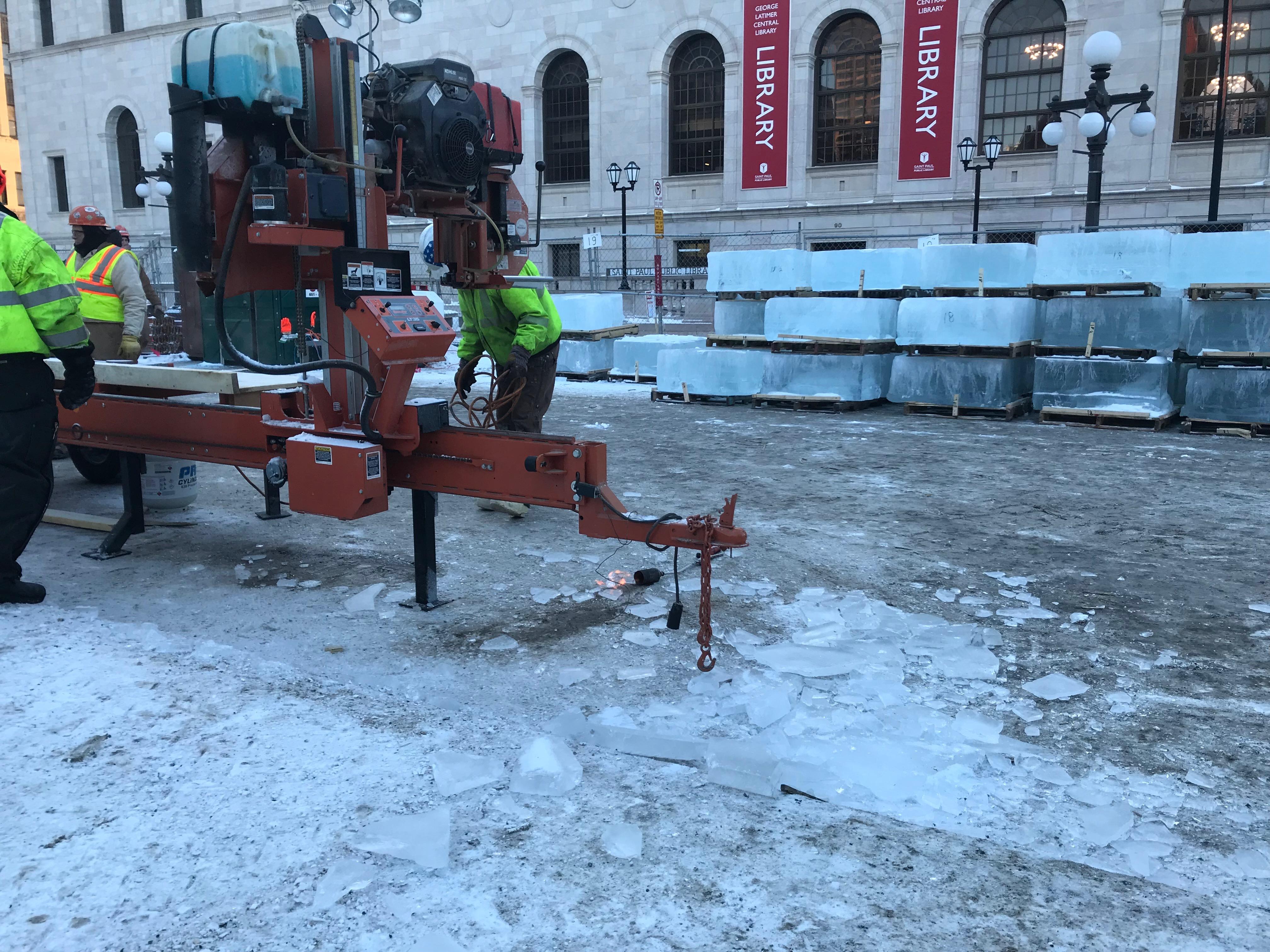

Share
The 2018 St. Paul Winter Carnival Ice Palace has added significance as the Twin Cities prepares to host Super Bowl 52.
Tim McCarthy Business Manager at St. Paul Plumbers and Gasfitters Local 34 explained that mostly volunteer union tradespeople had been diligently erecting the six tower ice block structure at Rice Park in Downtown St Paul. According to Bricklayers and Allied Craftworkers Local 1, Executive Vice President Terry Wong, “the tallest tower will be 68 feet in height.”
The hulking blocks of ice are harvested from Green Lake in Spicer, Minnesota. Blocks are then transported by flatbed trucks to Rice Park. At the park, machinery is staged to saw the ice blocks into the appropriate dimensions, 22 x 44 x 20 inches. Approximately 4,0000 ice blocks will be formed using this process.

Wong further explained that the giant ice rectangles adhere together by melting the top of the base block while a crane moves the next 250-pound block. As the union volunteers carefully align and release the block from the crane it immediately refreezes onto the base block.

At the beginning of the project, temperatures hovered in the 30s making the carving of the blocks more tolerable. As temperatures plummeted the physical demands on the body became more pronounced, but the freezing temperatures contributed to a more efficient assembly of the behemoth ice cubes.

To withstand the freezing temperatures for extended periods of time the volunteer building tradespeople put on layers and take advantage of a heated trailer for warm-up breaks. However, the conditions are not ideal for the equipment. The industrial saw needed to be heated with a blow torch so that the mechanical components do not freeze and fail.

Reporting in below freezing conditions can also be challenging. Recording and video equipment struggled in the weather. iPhones shiver and their batteries drain exponentially. Exposing fingers to take notes can be hazardous.
Completing the project by the 19th requires consecutive day and night shifts. The consensus is that the project is demanding and complicated. Nevertheless, workers mentioned that they are motivated to volunteer because they want to participate in a unique event and take advantage of the opportunity to showcase their skills and talent to a broader public.

